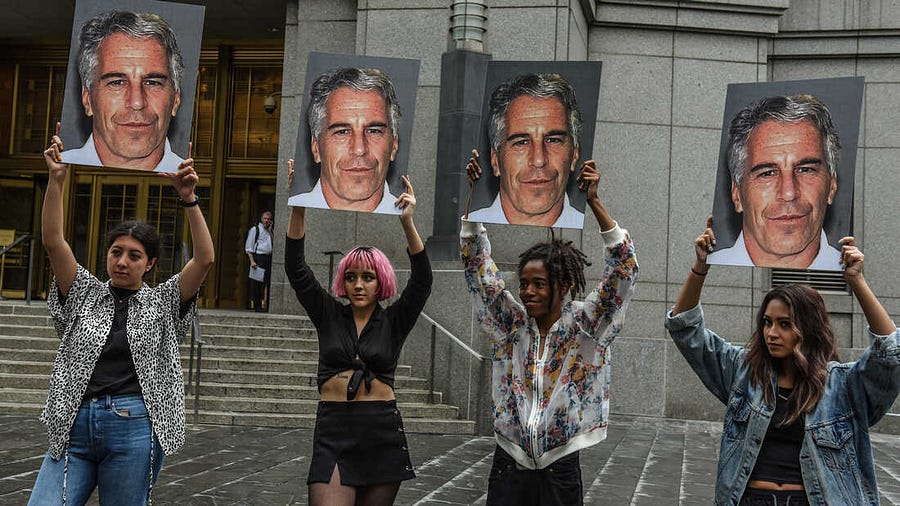The Vanishing Truth of Jeffrey Epstein
The Vanishing Truth of Jeffrey Epstein

On the night of August 10, 2019, a man whose name had become synonymous with sex trafficking and impunity was found unresponsive in a cell at the Metropolitan Correctional Center in New York. Four days earlier, Jeffrey Epstein had signed his last legal document, leaving behind a wealth of questions.
Now, nearly six years later, on July 7, 2025, the U.S. Department of Justice and FBI have released what they call a final disclosure: Epstein, they say, died by suicide. No client list, no video of a powerful man sneaking into his cell, no elaborate blackmail network. Nothing more to see here.
Yet for many Americans, and interested onlookers across the world, the latest announcement did not close a chapter, it ripped the page wider open.
Before he was the central figure in a global criminal scandal, Epstein was a mysterious financial consultant who never ran a traditional firm, never traded publicly, and yet moved in the world of the ultra-wealthy. He befriended presidents like Bill Clinton and Donald Trump, royals like Prince Andrew, and scientists. He owned a fleet of planes, and real estate from New York to the Virgin Islands. But it wasn’t his wealth that would define him, it was the web of abuse and secrets that lay beneath it.
The original break in Epstein’s seemingly untouchable status came in 2008, when he struck a sweetheart plea deal that allowed him to serve just 13 months in a Florida county jail, with work release privileges. It wasn’t until renewed journalistic attention, particularly by Julie K. Brown of the Miami Herald, that the public got a full view of the scale of Epstein’s trafficking operation.
His 2019 arrest on federal charges for sex trafficking of minors was seen as long-overdue justice. But justice, like Epstein himself, didn’t survive long.
The government’s Monday disclosure includes video footage — raw and “enhanced” — intended to end doubts about Epstein’s death. They say the footage shows no one entered his cellblock the night he died. Case closed.
But the footage, it turns out, is incomplete. There’s a minute missing.
Attorney General Pam Bondi said the missing time is “standard resetting procedure.” But in a story defined by systemic failure and cover-up, that single missing minute now looms large.
Is it paranoia to focus on sixty seconds? Or common sense when the man in question was believed to hold secrets that could implode the reputations of some of the world’s most powerful individuals, including President Trump, at least according to the world’s richest man? You decide.
Speaking of which, one of the most persistent public demands has been for Epstein’s “client list”, a document said to name powerful figures who may have partaken in or enabled his abuses. In February 2025, AG Bondi stirred that hope when she told Fox News, “It’s sitting on my desk right now.”
Now, in July, that same DOJ says no such list exists. Not in usable form. Not in admissible form. Not at all.
This contradiction has fanned the flames of doubt. What was on Bondi’s desk? What changed?
Another startling revelation: the DOJ admitted it has over 10,000 images and videos related to the Epstein case, many of which involve child sexual abuse. Yet multiple individuals connected to both Epstein’s and Ghislaine Maxwell’s trials told the Associated Press they had no knowledge of such a trove.
How is it that such evidence, if truly available, was neither shared with prosecutors nor surfaced during Maxwell’s high-profile conviction in 2021? And if it wasn’t shared then, why disclose it now only to say it will not be made public?
Transparency, the government claims, must yield to privacy and decency. But in a case where so much has been buried for so long, those words ring hollow.
Jeffrey Epstein’s death in a federal prison, while on suicide watch, while key security cameras malfunctioned, while guards falsified records, while the highest stakes swirled around him, was always going to inspire disbelief.
But disbelief is no longer confined to internet forums or fringe influencers. It is now part of the mainstream psyche.
What the government hoped would be closure on July 7has turned into another layer of mystery, like a Russian nesting doll of unanswered questions. There are no charges, no final reckoning.
Perhaps the scariest part is not that Epstein was murdered, or that he killed himself, or that powerful men got away with terrible crimes.
Perhaps the scariest part is that the full truth may never be known, and that even in an age of surveillance and data, some secrets still die in the dark.
When asked what they hoped for, one survivor of Epstein’s abuse replied:
“That no girl ever has to walk into a room and feel like no one will believe her.”
On July 7, that hope feels more distant than ever.

